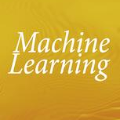New technologies such as Machine Learning (ML) gave great potential for evaluating industry workflows and automatically generating key performance indicators (KPIs). However, despite established standards for measuring the efficiency of industrial machinery, there is no precise equivalent for workers' productivity, which would be highly desirable given the lack of a skilled workforce for the next generation of industry workflows. Therefore, an ML solution combining data from manufacturing processes and workers' performance for that goal is required. Additionally, in recent times intense effort has been devoted to explainable ML approaches that can automatically explain their decisions to a human operator, thus increasing their trustworthiness. We propose to apply explainable ML solutions to differentiate between expert and inexpert workers in industrial workflows, which we validate at a quality assessment industrial workstation. Regarding the methodology used, input data are captured by a manufacturing machine and stored in a NoSQL database. Data are processed to engineer features used in automatic classification and to compute workers' KPIs to predict their level of expertise (with all classification metrics exceeding 90 %). These KPIs, and the relevant features in the decisions are textually explained by natural language expansion on an explainability dashboard. These automatic explanations made it possible to infer knowledge from expert workers for inexpert workers. The latter illustrates the interest of research in self-explainable ML for automatically generating insights to improve productivity in industrial workflows.
翻译:暂无翻译


